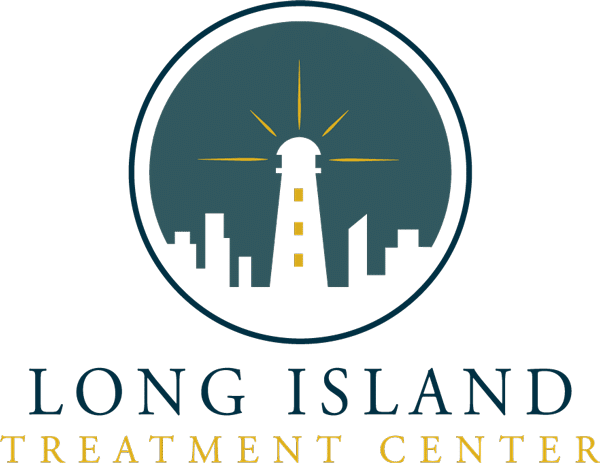Though codeine is originally a prescription medication for mild to severe pain, it’s one of the most commonly abused substances in the US.
In fact, it’s estimated that 33 million people use codeine as a drug each year. On top of that, between 1999 and 2019, almost 500,000 Americans fatally overdosed on the medication.
Unfortunately, New York isn’t a stranger to opioid addiction. The state’s death rates from opioid overdose were exceeding national rates in 2020 and 2021. It’s estimated that 30 in every 100,000 New Yorkers died from opioid addiction in 2021.
It may seem like a small percentage, but the numbers are steadily increasing.
The good news is, codeine addiction treatment is possible as long as you know where to look for help. If you or someone close to you is suffering from codeine addiction, our guide here will help you understand where to start, what to expect, and how to get help.
Table of Contents
What Is Codeine and Why Is It So Addictive?
Codeine is originally an opioid pain reliever prescribed for severe pain. However, the human body changes it to morphine once it’s consumed, which causes it to induce feelings of euphoria. That’s why it has an addictive potential and oftentimes calls for addiction treatment.
When you repeatedly use codeine to induce that euphoric feeling, you unknowingly start a cycle of dependency, which means your body will become dependent on the drug to feel good.
Over time, the body will need higher doses to achieve the same effect, which only complicates matters further.
Codeine addiction usually starts when the drug intervals aren’t managed by a healthcare provider. If patients are left to their own will, they’ll start abusing the drug to take the pain away. Eventually, their bodies will be dependable on it, even if the pain is gone.
Why Is Codeine Addictive?
Codeine is addictive because it targets the central nervous system and blocks pain signals. That way, the body doesn’t feel any pain.
On top of that, the human body changes the codeine to morphine, which reduces anxiety and causes stress to vanish. This makes it more likely to be abused.
However, that’s not all. There are also more reasons why codeine may be addictive, and they differ from one person to another:
- Genetics: People with close relatives suffering from addiction are more likely to get addicted, although not necessarily to the same substance. It can be either a result of being exposed to the issue constantly, or it may boil down to genes.
- Environmental factors: People living in an area with high drug use or are constantly exposed to other people suffering from addiction are more likely to suffer from the issue themselves. On top of that, being exposed to trauma can also be a factor in causing addiction.
- Mental health disorders: If you’re suffering from anxiety, chronic stress, or depression, you’re more likely to get addicted to codeine if you try to self-medicate. People suffering from mental health disorders can try anything to relieve their symptoms if they get desperate, which may eventually lead to addiction.
- Positive reinforcement: The most common and simplest reason for codeine addiction is positive reinforcement. The drug promises you a euphoric feeling and to get rid of your anxiety. So, the positive outcomes make you crave more of the drug to feel them again.

Symptoms of Codeine Addiction
Codeine addiction appears in many forms, depending on the severity of the addiction and how each person reacts differently. The symptoms can either be psychological, physical, or behavioral. Here’s a roundup:
Psychological symptoms of codeine addiction:
- Anxiety
- Stress
- Confusion
- Hallucinations
- Delusions
- Depression
Physical symptoms:
- Slow breathing
- Itching
- Dizziness
- Lethargy
- Pinpoint pupils
- Sexual dysfunction
Behavioral symptoms:
- Becoming isolated
- Regularly trying to get more codeine
- Taking more days sick at work
- Constantly needing to consume more codeine to get the same effect
- Getting into financial trouble because of spending money on codeine
- Faking injuries to try and get more codeine
Long-Term Results of Codeine Addiction
Suffering from a short-term codeine addiction is one thing, but abusing the drug for years is a completely different problem. A lot of problems are likely to appear due to a long-term codeine addiction, such as sleep problems, bowel damage, and an irregular heartbeat.
The medication may also cause liver problems in the long run. Here’s a roundup of the long-term results of codeine addiction:
- Constant hallucinations
- Night sweats
- Permanent bowel damage
- Liver damage
- Kidney damage
- Slow heart rate
- Respiratory arrest
- Uncontrollable muscle spasms
What Is Withdrawal From Codeine Like?
Withdrawal is often the hardest phase of recovering from an addiction, and it comes with a bunch of symptoms that may be challenging to deal with.
In the case of codeine, withdrawal causes insomnia, muscle aches, dilated pupils, rapid heartbeat, indigestion, runny nose, and chills. It may also cause psychological effects like irritability.
That’s why it’s not often recommended to quit codeine cold turkey. Doing so without medical supervision can be dangerous. The best course of action would be to reduce the dosage regularly until the body can adjust to living without it.
Otherwise, the person suffering from addiction may be tempted to use the drug again just to get rid of the withdrawal symptoms.
When the drug is completely out of the body, that’s when the actual treatment can start.
Codeine Addiction Treatment Near You
Treatment plans for codeine addiction can differ from one facility to the other and from one patient to the other. However, most plans start with a detox period and then move on to therapy or rehab.
Here’s an overview of how codeine addiction treatment goes:
Detox Phase
The first step in codeine addiction treatment is getting the drug out of your system. This usually takes some time and needs to be under medical supervision because of the severe withdrawal symptoms.
The treatment usually doesn’t start until the codeine is entirely out of your body. Some facilities will use a tapering system to get you off the drug so that the withdrawal symptoms will come gradually.
You’ll also be offered medication to help with symptoms like nausea, anxiety, seizures, and so on.
The detox phase usually lasts from two weeks to a month or more, depending on how severe the addiction is. Some withdrawal symptoms may last even after detox. In this case, they may need cognitive behavioral therapy to help.
Rehab Phase
After the detox phase is done and the codeine is entirely out of your system, it’s time to get enrolled in a rehab program. Patients with mild addiction will likely be offered outpatient rehab programs, where they can get treated without leaving their houses.
That way, they’ll be able to adjust their schedule better for the treatment and they can stay within their comfort zone.
On the other hand, patients with severe addiction will likely need to get into residential programs, where they have to stay at the treatment facility for the rehab phase:
- Outpatient programs: These programs are designed for patients with mild addiction or those who have obligations that keep them from staying in a facility. The patient will often attend sessions on designated days and return home.
- Residential or inpatient programs: These programs are considered intensive, and they involve staying in the treatment facility with 24/7 supervision. Patients in these programs go through group counseling and individual therapy sessions.
In all cases, the rehab phase usually includes multiple types of therapy, including cognitive behavioral therapy, which is the most common form of therapy for addictions, and dialectical behavior therapy, which works on your stress management skills.
The therapy will likely be in the form of group sessions, one-on-one sessions, and even family sessions.
Aftercare Programs
Even when the detox phase and the rehab are done, that doesn’t mean the treatment plan is done yet. Aftercare programs are offered for patients to make sure they won’t relapse or use the drug again. These programs often include support meetings to acknowledge each milestone in staying sober.
If you’re not willing to attend group meetings, you can always choose a private therapist to help you with the post-rehab phase.
For patients not ready yet to reintegrate into society, there are sober living facilities available. These institutions are safe havens for people formerly suffering from addiction. They get enough help to rebuild their lives and gain enough confidence to become part of society again.
Similarly, there are supportive programs like Narcotics Anonymous that help patients relate to others on their road to recovery.
Final Thoughts
Codeine addiction is an increasing problem in New York, but there are always treatment centers that can help.
Though overcoming codeine can be challenging because of the severe withdrawal symptoms, gradually getting off the drug makes things better, and once the drug is out of the way, you can seek rehab and therapy to get over your addiction.
Our team at Long Island Treatment Center can guide you through the recovery process with a customized plan that caters to your specific needs.

